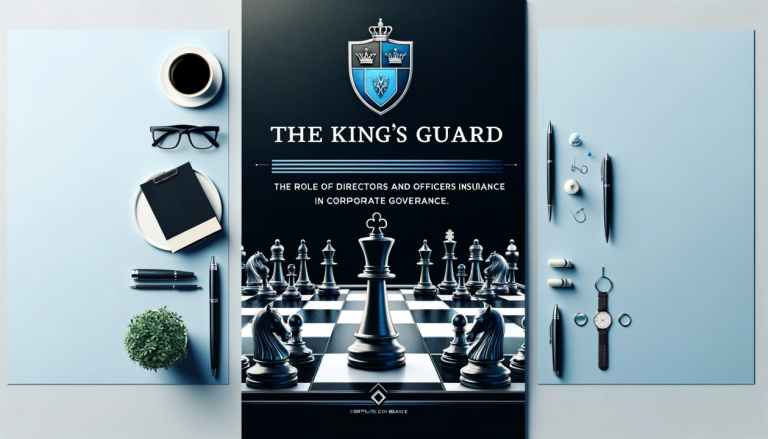Factors Affecting D&O Insurance Premiums
Company Size and Revenue
The larger the company (in terms of revenue, assets, or number of employees), generally the higher the D&O premium. A small startup with $1 million in revenue will usually pay much less than a mid-market company with $100 million in revenue, because the potential exposure and stakes of a lawsuit grow as the company’s size grows. Insurers view bigger companies as having more stakeholders and larger potential damages in a lawsuit.
Industry and Sector Risk
Different industries carry different levels of risk for D&O claims. For example, companies in highly regulated or volatile sectors – such as finance, healthcare, biotechnology, or cryptocurrency – might face steeper premiums because history shows more frequent or costly lawsuits in those fields. On the other hand, a company in a relatively stable industry might pay less. A tech startup might pay more than a small local manufacturing firm, because tech startups often have venture capital involvement and rapid changes that can trigger suits.
Stage (Private vs Public)
Whether the company is privately held or publicly traded has a big impact on cost. Public companies generally pay significantly more for D&O insurance due to the risk of shareholder class actions and regulatory scrutiny. If a company is about to go public or just went public, their D&O costs will jump to reflect that new exposure. Private companies, especially smaller ones, usually have lower premiums. For instance, a private company policy might cost a few thousand dollars a year, whereas a comparably sized public company could be paying tens of thousands for similar coverage (due to the higher risk environment of public markets).
Claims History and Financial Health
Insurers will look at whether the company (or its directors/officers) has had prior D&O claims or other litigation. A history of lawsuits or even numerous litigation threats can raise premiums, as it indicates a higher likelihood of future claims. Additionally, the financial stability of the company plays a role: if a company’s financials look shaky or it’s near bankruptcy, insurers see a higher risk of claims (for example, creditors might sue directors if the company goes insolvent). Strong, stable financials can help keep premiums lower, whereas distressed companies often face higher rates or difficulty securing coverage.
Coverage Limits and Deductible
The amount of coverage you purchase directly affects cost – higher policy limits mean higher premiums. Common coverage limits for small to mid-sized companies might range from $1 million to $5 million, whereas large companies might carry $20 million or more. As an example, a $1 million policy will cost much less than a $5 million policy, roughly in proportion to the coverage increase (though there are efficiencies when buying higher limits). Similarly, the deductible (retention) you choose affects cost: a higher deductible (meaning the company pays more out-of-pocket before insurance kicks in) will lower the premium, while a low deductible will raise the premium. Companies can often save money by taking on a bit more risk in the form of a higher deductible, if they’re comfortable they could absorb that initial amount for a claim.
Optional Coverages and Endorsements
Sometimes companies add endorsements or additional coverages to their D&O policy, such as Employment Practices Liability coverage or extra protection for specific scenarios. Each addition can increase the cost. Likewise, if the policy is very broad (covering the entity for more types of claims, including regulatory investigations, etc.), it may cost more than a bare-bones policy. Tailoring the policy to the company’s needs with the help of a broker ensures you’re not overpaying for extras you don’t need, but also not skimping on important protections.
Typical Cost Ranges and Examples
It’s difficult to generalize D&O insurance cost because it’s so company-specific, but to provide a sense of scale: many small businesses pay somewhere in the range of $1,000 to $2,500 per year for a basic D&O policy (often around $1M in coverage). One industry survey found that the average small business D&O policy cost about $1,500 annually. These figures often assume a company with relatively low revenue (under a few million) and no prior claims.
For high-growth startups or mid-sized private companies, especially those with external investors, the cost tends to be higher – perhaps in the $3,000 to $10,000 per year range for a few million in coverage. For example, a venture-funded tech startup with $20 million in revenue might pay around $5,000–$8,000 annually for a $1 million D&O policy, and more if they opt for higher limits like $5 million of coverage. Adding more coverage often scales roughly linearly; e.g., doubling the coverage limit could roughly double the premium (with some discount usually for larger policies).
For public companies or larger private firms, premiums vary widely but are generally much higher. A small publicly traded company might spend tens of thousands of dollars per year on D&O insurance. Large public corporations can spend hundreds of thousands to even over a million dollars annually on complex D&O programs, given their need for high limits and multiple layers of insurance. If a company has a history of shareholder litigation or operates in a very high-risk sector, the cost could be on the higher end of the spectrum.
It’s also worth noting that the insurance market conditions can influence pricing. In years where insurers have faced a lot of D&O claims industry-wide (for example, waves of lawsuits or economic downturns leading to more litigation), premiums tend to go up across the board. In quieter years, prices might stabilize or soften. As of recent trends, D&O rates had been climbing due to increased claim activity, but they can fluctuate.
Getting the Best Value
To manage D&O insurance costs, companies should work with a knowledgeable broker who can shop their risk to multiple insurance carriers. Different insurers may quote different prices for the same company, based on their assessment of risk or their appetite for certain industries. You can often get a better premium by presenting your company in the best light – for instance, highlighting good governance practices, having experienced board members, showing strong financials, etc., can make underwriters more comfortable and lead to lower quotes. Additionally, carefully choosing appropriate coverage limits and deductibles for your risk tolerance will ensure you’re not overpaying for unnecessary coverage or, conversely, leaving dangerous gaps.
Conclusion: In essence, the cost of D&O insurance can range from a modest expense to a significant investment, depending on your company’s situation. However, it’s important to weigh that cost against the potential financial ruin a major lawsuit could bring. Paying, say, $2,000 to $10,000 a year for coverage (typical for many private companies) can be seen as a relatively small price for protection against lawsuits that could cost millions. And even for larger firms paying much more, D&O insurance provides stability and peace of mind that is often well worth the price. The key is to obtain quotes, understand your risk factors, and secure a policy that balances cost with sufficient protection. By doing so, you’ll ensure that your leadership team is protected without overextending your budget.

























































































































